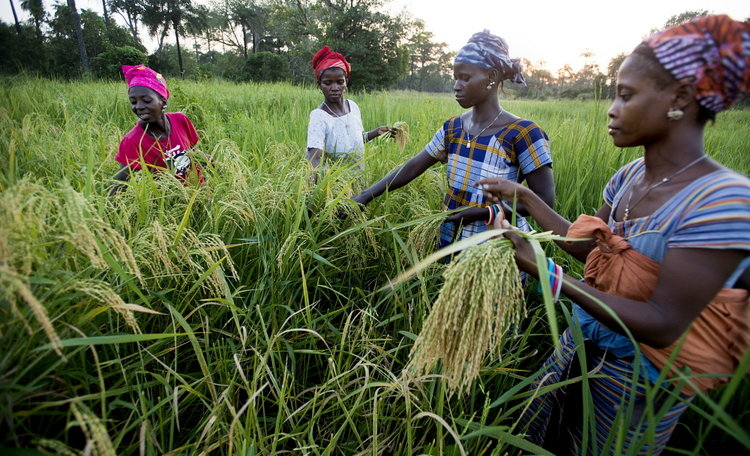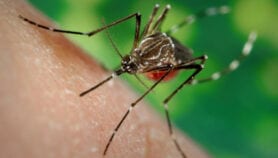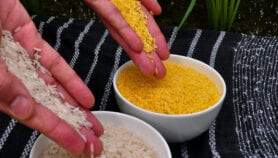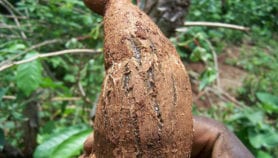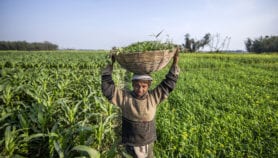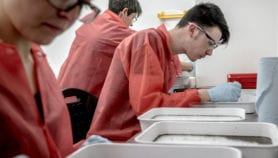By: Edd Gent
Send to a friend
The details you provide on this page will not be used to send unsolicited email, and will not be sold to a 3rd party. See privacy policy.
Supercomputers and genetic engineering could help boost crops’ ability to convert sunlight into energy and tackle looming food shortages, according to a team of researchers.
Photosynthesis is far from its theoretical maximum efficiency, say the authors of a paper in Cell, published on 26 March. They say that supercomputing advances could allow scientists to model every stage in the process and identify bottlenecks in improving plant growth.
But the authors add that far more science spending is needed to increase yields through these sophisticated genetic manipulations, which include refining the photosynthesis process.
“Anything we discover in the lab now won’t be in a farmer’s field for 20 to 30 years,” says lead author Stephen Long, a plant biologist at the University of Illinois at Urbana-Champaign (UIUC) in the United States. “If we discover we have a crisis then, it’s already too late.”
The paper says that, by 2050, the world is predicted to require 85 per cent more staple food crops than were produced in 2013. It warns that yield gains from last century’s Green Revolution are stagnating as traditional approaches to genetic improvement reach biological limits.
“The work they’re doing is not possible without incredible investment. How that translates to a farmer in Sub-Saharan Africa is a very open question.”
Evan DeLucia, UIUC
Instead, the group says crops such as rice and wheat, which evolved the more common C3 method of photosynthesis, could be upgraded to the more efficient C4 process found in crops such as maize, sorghum and sugar cane.
Another way to improve photosynthesis would be to widen the spectrum of light crop plants can process, the scientists say. Some algae and bacteria are able to process near infrared light and this capability could feasibly be genetically engineered in crops.
Long’s lab has demonstrated in a soon-to-be-published paper that inserting genes from cyanobacteria, a type of photosynthetic bacteria, into crop plants can make photosynthesis 30 per cent more efficient. A project backed by the philanthropic Bill & Melinda Gates Foundation is now attempting to convert rice from C3 to C4
The paper identifies two steps necessary to achieve these gains. First, techniques that allow researchers to insert genes into targeted parts of the genome must be translated from microbe biotechnology into plant biotechnology. Second, existing partial computer models of crop plants must be combined into a complete simulation.
Genetic improvements will also have to work alongside improved farming practices, the authors say. Long says that only half of the yield gains from the Green Revolution were the result of improving crops’ genetic potential. “Another large chunk was getting the agronomy right for those genetic improvements,” he says.
Evan DeLucia, a plant biologist at UIUC who is not linked with the paper, says the work is promising, but with developing countries likely to be most affected by future food shortages access to the technology is a concern.
“The work they’re doing is not possible without incredible investment,” he says. “How that translates to a farmer in Sub-Saharan Africa is a very open question.”
Boosting photosynthetic rates will also add pressure on water resources already threatened by global warming, DeLucia adds, as the process requires water. “Soon you will hit a water ceiling where the amount of water becomes limiting,” he explains.
Long accepts the approach is unlikely to solve geographical disparities in food production. But he maintains that maximising yields in areas where water access is not a problem should still help mitigate global food shortages.
This article was amended on 15 April to better explain processes to improve photosynthesis.
References
Stephen P. Long Meeting the global food demand of the future by engineering crop photosynthesis and yield potential (Cell, 26 March 2015)


